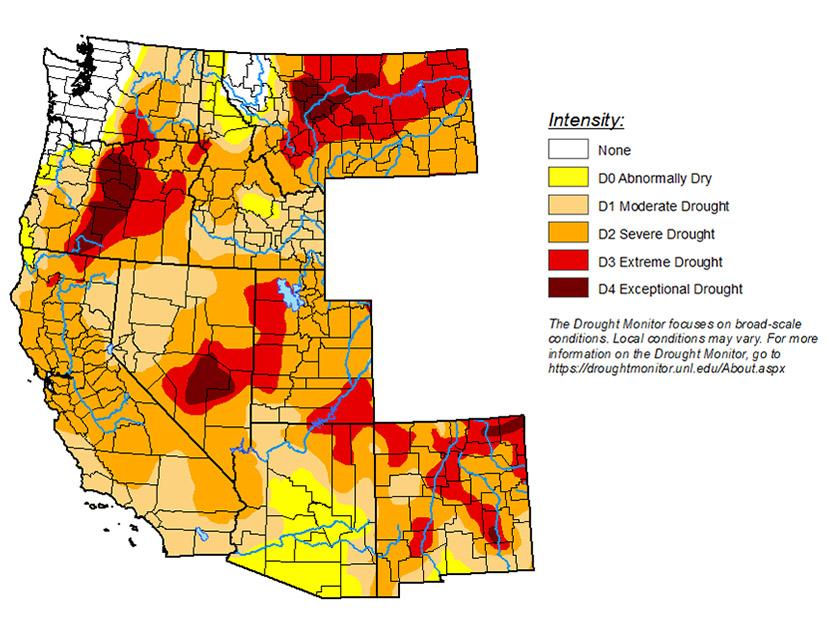New York’s plan to buy power from two new transmission lines being built to bring over 2.5 GW of renewable energy into New York City drew more than 17,000 comments by Monday, with opinion generally in favor of the entirely in-state project but divided on the project that would import electricity from Hydro-Québec in Canada (15-E-0302).
The state in September selected two transmission projects as Tier 4 renewable resources under its Clean Energy Standard. The 1,300-MW Clean Path New York (CPNY) project, developed by the New York Power Authority (NYPA) and Forward Power, a joint venture of Invenergy and energyRe, would bring upstate solar and onshore wind into the city. The 1,250-MW Champlain Hudson Power Express, developed by Transmission Developers Inc. and Hydro-Québec’s U.S.-based subsidiary HQUS, would run from the state’s border with Canada to Queens, with portions of the line running underneath the Hudson River.
CPNY Contracting Summary
” data-credit=”NYSERDA” data-id=”2496″ style=”display: block; float: none; vertical-align: top; margin: 5px auto; text-align: center;” alt=”CPNY Contracting Summary (NYSERDA) Content.jpg” data-uuid=”YTAtODQwMjA=”>CPNY Contracting Summary | NYSERDA
Regional development entities, county legislatures and labor union members supported both projects for creating an estimated 10,000 jobs statewide with $8.2 billion in in-state economic development investments. Others touted the new lines’ environmental benefits.
Julie Tighe, president of the New York League of Conservation Voters, said that CPNY is projected to reduce the state’s greenhouse gas emissions by 2.4 million metric tons annually, reducing overall emissions from the state’s electricity sector by 22%. CHPE would reduce GHG emissions by 37 MMT through 2040 and establish a $117 million environmental trust fund to improve water quality across the Hudson, Harlem and East rivers, as well as Lake Champlain, she said.
The projects are expected to deliver 18 million MWh of renewable energy per year to New York City, representing more than a third the city’s annual electricity consumption.
CPNY has a planned June 30, 2027, commercial operation date, while CHPE has an estimated COD of Dec. 15, 2025.
Winter Peak
The Independent Power Producers of New York (IPPNY) reiterated their longstanding opposition to CHPE. (See Enviros, Generators Oppose Canadian Hydro Line to NYC.)
“It is entirely possible that the [state’s] 2040 zero-emissions goal can be met at a lower cost with greater net benefits with the CPNY project, along with other zero-emission technology that does not require expensive new transmission lines,” IPPNY CEO Gavin Donohue said.
Not only would the CHPE project bypass both existing and new upstate renewable generation, it will not be able to meet the city’s power needs during winter months because Quebec load would take priority, IPPNY said.
 HQUS/CHPE Contracting Summary | NYSERDA
HQUS/CHPE Contracting Summary | NYSERDA
With the state’s electric system projected to become a winter-peaking system by 2041, “it is concerning that the HQUS project was selected despite being only able to provide capacity during nearly half the life of the proposed 25-year contract, raising serious questions regarding the reliability benefits of the project,” Donohue said.
IPPNY cited New York State Energy Research and Development Authority’s own benefit-cost analysis as showing CPNY would produce 34% greater net benefits than those yielded by CPHE, and the combined awards producing lower net benefits than if NYSERDA contracted CPNY alone.
Environmental, First Nations Concerns
The Sierra Club asserted that hydropower from mega-dams like the ones in Quebec is not renewable energy. The dams’ reservoirs can flood and destroy thousands of trees of the boreal forests that absorb tons of CO2 out of the atmosphere, and submerged vegetation causes more methane and CO2 to be released, said Catherine Skopic of the Sierra Club NYC Group and Atlantic Chapter.
In addition, dredging to lay the cables would stir up toxic polychlorinated biphenyls on the riverbed and further contaminate the waters of the Hudson River, Skopic said.
“The Hudson River is a fragile and important ecosystem, and under no circumstances should we be dredging up 100 years of buried toxins to build this pipeline,” Sierra Club volunteer Tara Noble added.
Some Bronx and Queens residents said they were more concerned about the air they breathe than about potential dangers from churning up riverbeds.
Since 2001 NYPA has operated four natural gas-fired peaker plants in the Mott Haven and Port Morris neighborhoods, promised at the time to be temporary, which neighborhood advocacy group South Bronx Unite said “have instead become permanent fixtures, burdening our community with additional air pollution.”
The group said those two neighborhoods have asthma hospitalization rates eight times higher than the national average and 21 times higher than any other neighborhood in the city.
Both transmission projects are essential to meeting decarbonization goals in New York City and improving public health, Queens resident Gianna Lum said.
“A just transition from fossil fuels is not only a priority to protect future generations,” Lum said. “The current peaker plant in Western Astoria is polluting nearby [public] housing and putting the health of vulnerable community members at risk.”
The Mohawk Council of Kahnawake, Quebec, said it supports CHPE and has agreed with Hydro-Québec on terms to host the new Hertel substation and the new 36-mile transmission line to be built through its territory.
While reparation claims by other indigenous groups for past harms by Hydro-Québec “must clearly be addressed with the relevant authorities, it is important to point out that the hydropower installations in question were not built as a part of the CHPE project,” the council said.


